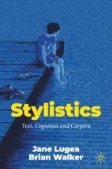Search
Search Results
-
The Characteristics of Ambiguity Tolerance
The aim of this chapter is to provide the theoretical background for the concept of ambiguity tolerance. First, an overview and definitions are...
-
The Impact of Openness and Ambiguity Tolerance on Learning English as a Foreign Language
This book highlights the importance of individual learner differences in learning English as a foreign language and reports the findings of a study...
-
Processing of Reference Ambiguity and Long-Distance Anaphora
This chapter aims at solving the two residual problems — reference ambiguity and long-distance anaphora. Section 2 centers on an investigation into...
-
Towards a theory of morphosyntactic focus marking
Based on six detailed case studies of languages in which focus is marked morphosyntactically, we propose a novel formal theory of focus marking,...

-
Focus without pitch boost: focus sensitivity in Japanese why-questions and its theoretical implications
Unlike typical wh-questions, why -questions are known to be focus-sensitive, but the linguistic realization of their focus sensitivity shows an...

-
Floating quantifiers, specificity and focus in Lalo Yi
Lalo Yi presents a distribution of numeral-classifier pairs that appears to be the complete inverse of the norm found in other numeral-classifier...

-
Officiality and strategic ambiguity in language policy: exploring migrant experiences in Andorra and Luxembourg
This article examines de jure language officialization policies in Andorra and Luxembourg, and addresses how these are discursively reproduced,...
-
Ignorance and concession with superlative modifiers: a cross-linguistic perspective
Superlative modifiers (SMs) are known to demonstrate an ambiguity between an epistemic reading (EPI) conveying speaker ignorance and a concessive...
-
Summary of Findings, Implications, and Recommendations for the Foreign Language Classroom
The aim of this chapter is to outline the key findings of the study that focus on examining the effect of openness to experience and ambiguity...
-
Discussion
This chapter of the book is devoted to a discussion of the results, collected according to the research blueprint outlined in the previous chapter....
-
Context facilitates the decoding of lexically ambiguous words for adult literacy learners
An estimated one-fifth of adults in the United States possess low literacy skills, which includes minimal proficiency in reading and difficulty...

-
Affix polyfunctionality in French deverbal nominalizations
This article investigates the semantic polyfunctionality of affixes, i.e. their ability to serve a variety of distinct semantic functions. Based on...

-
The syntax of individuating and measuring pseudo-partitives in Alasha Mongolian
Pseudo-partitive constructions give rise to multiple interpretive ambiguities including a container interpretation (i.e. individuating) and a...

-
Relativized Exhaustivity: mention-some and uniqueness
Wh -questions with the modal verb can admit both mention-some (MS) and mention-all (MA) answers. This paper argues that we should treat MS as a...

-
Arbobanko - A Treebank for Esperanto
In this paper we describe and evaluate Arbobanko, a syntactic treebank for the artificial language Esperanto, as well as methods and tools used to...
-
The rise and fall of a person-case constraint in Breton
This work explores the coupling of person-split nominative objects with anomalous subjects (Jahnsson’s Rule (JR), Person-Case Constraint (PCC)). In...

-
Humour
This chapter presents what is arguably the first review of the linguistics of humour studies for stylisticians. We explain how ambiguity,...
-
Isn’t there more than one way to bias a polar question?
I show that speaker bias in polarity focus questions (PFQs) is context sensitive, while speaker bias in high negation questions (HNQs) is context...

-
The Study
The aim of the present chapter is to provide details of the empirical study devoted to the investigation of the relationships between openness to...
-
Full Inflection Learning Using Deep Neural Networks
In this paper we present a deep learning architecture capable of predicting the full inflectional paradigms from the uninflected, dictionary form of...
